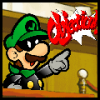Sign in to follow this
Followers
0

Making A Simple Platformer In Game Maker. A tutorial.
By
Spudd, in Computer Gaming

By
Spudd, in Computer Gaming
Terms of Use | Privacy Policy | Guidelines | We have placed cookies on your device to help make this website better. You can adjust your cookie settings, otherwise we'll assume you're okay to continue.